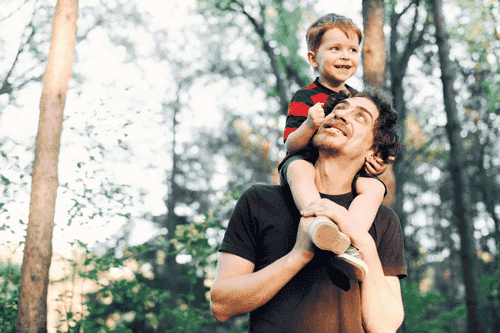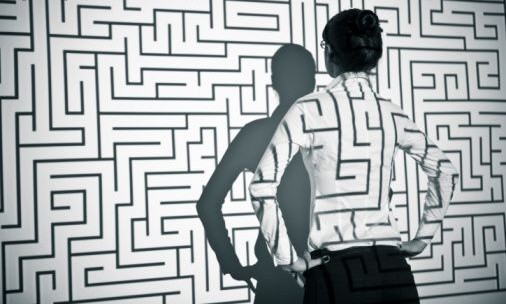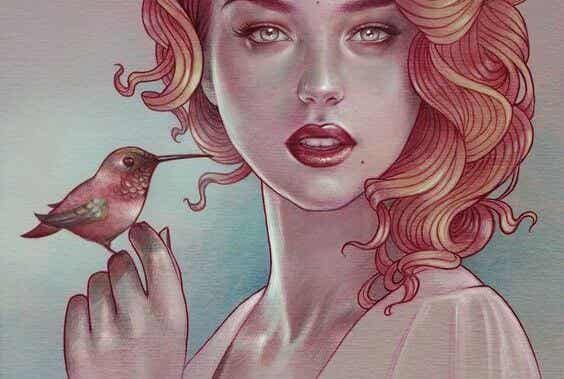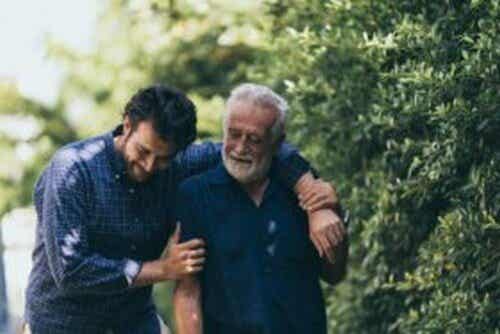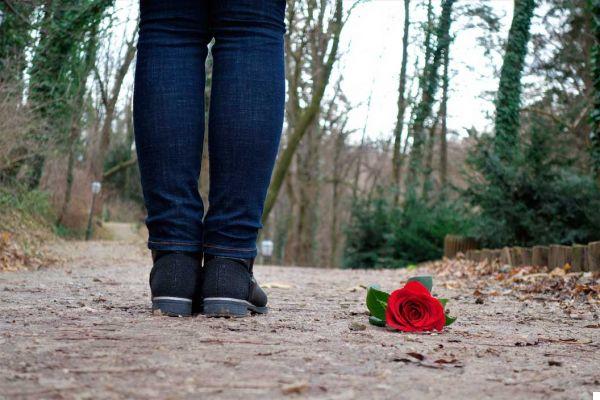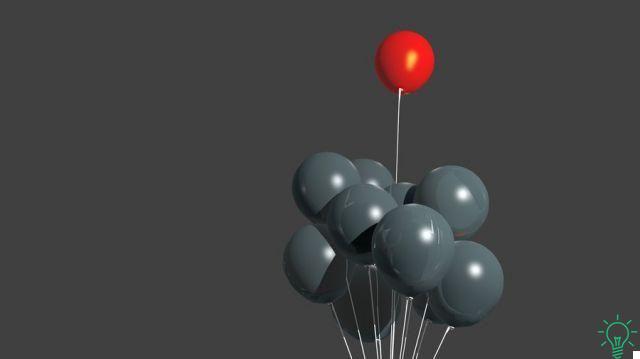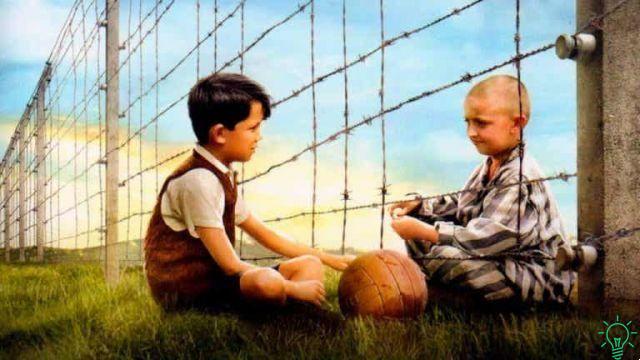
Last update: 10 September, 2022
The Boy in the Striped Pajamas is a literary work by John Boyne published in 2006, later brought to the big screen by Mark Herman. Film and book have numerous differences, but we will not dwell on them as they are not very relevant for the development of this article. Instead, we will focus on the main values and food for thought conveyed by the work, therefore the film and the book will be equally valid as a reference.
The boy in the striped pajamas develops in one of the cruelest and most shameful moments of humanity: theholocaust perpetuated during the Second World War. Episode criticized and repudiated, but not to be forgotten, since, as they say, we need history to learn and not to repeat the same mistakes.
The story begins
We are in Nazi Germany, in the home of a military family, with strong values and ideology, or this it seems, among its members. The head of the family is a high-ranking soldier in Hitler's service who, thanks to his "great work", is sent to Auschwitz to continue his work there. The whole family moved to the new home, a completely isolated house, but very close to the concentration camp. Let's get to know the characters better:
- The children: the protagonist is Bruno, the commander's youngest son; like all children his age he ignores the world and just wants to play. He likes adventure books and exploring. In sharp contrast, there is Gretel, the older sister; at first we see her surrounded by dolls, although she will soon change the dolls that decorate her room with Nazi propaganda. On the other hand, Shmuel, a child of the same age as Bruno who, being a Jew, lives in the concentration camp.
- Parents: Bruno's father is a very strict senior officer who spends little time at home. His wife initially ignores much of her husband's activity; however, we can see how this condition of ignorance changes to the point that, upon getting out of it, her feelings for her husband will also change, feeling repulsed by her job position.
- The grandparents: they are the parents of the commander. The grandfather is proud of his son, however, the grandmother is strongly opposed to Nazism and is repulsed by the actions of her son.
The boy in the striped pajamas: two realities
In the book The boy in the striped pajamas we see that Shmuel and Bruno were born on exactly the same day, but their lives are completely different. Bruno lives in a wealthy family, he is the son of a soldier and his biggest concern is that he has no one to play with. He suffers because he is bored and he does not like the new place where he has to live. He doesn't understand why he has to move and leave his old friends.
Shmuel is Jewish and for this he was sentenced to live in a concentration camp. Consequently, his concerns are quite distinct from those of Bruno, although he too has the typical desires and innocence of children.
This contrast of reality shows us how our origins can mark us for life and condemn us; no one chooses where to be born, no one is guilty of belonging to one cradle rather than another. Children do not understand these differences and see others as they are, friends to play with and share adventures with. They cannot understand why they are separated by a barrier if they were born on the same day, if they are basically so similar.
The barrier in this case is real, but we can also see it as a symbol. Two children born on the same day, two identical children and two distinct realities. Today we look at the Nazis with contempt, but when he was born, Bruno had luck, or at least more luck than Shmuel. We could say that this barrier, this contrast of reality, still exists; albeit in a different way, it makes a difference to be born in one country rather than another, in a wealthy family rather than a family lacking in resources.
Relationship with Nietzsche's Outerman
The ideas of the philosopher Friedrich Nietzsche were adopted and reformulated by Nazism. Nietzsche believed in the existence of men with superior characteristics: strong, intelligent, creative, capable of thinking and reasoning. These men were the survivors, the ones who came out of the flock. The Nazis identified with this superman.
For Nietzsche, moreover, it was necessary to pass several stages to reach this status of Overman:
- Camel: represents the obedience, burdens and responsibilities we must bear.
- Leo: the camel, when it no longer wants to be such, becomes a lion. This represents liberation from burdens, rebellion and rejection of traditional values.
- Child: represents the last phase of the metamorphosis. The child lives far from prejudices and established values, has the task of creating his personal values. As if it were a game, the child builds from nothing.
We could recognize this image of the "child" in the characters of Shmuel and Bruno; they both show themselves free from prejudices, or semi-free, they are the only ones who overcome the barrier against which adults run into. By crossing the fence, they challenge established values; they do not care what they have been taught, their friendship goes further. Bruno wears the striped pajamas, matching Shmuel. For children, friendship is everything and there are no differences.
They make judgments as they get to know each other, they themselves create their personal values from nothing and from these values they decide.
"We shouldn't be friends, we should be enemies!"
-Bruno, The boy in the striped pajamas-
The weight of ideas
The boy in the striped pajamas highlights the problems that could arise from a particular ideology and the ideas that shape it. In the story and in the film we see that ideas can indirectly be far more dangerous than any weapon, especially if we take into account the power they have, at certain times, to unite the wills. A belief in a certain cause can lead people to commit any action, however unjust and cruel it may seem.
In order for an idea to last over time, it is important to instill it in the youngest; we see it in the lessons Gretel and Bruno receive and in the way their teacher teaches them history following the scripts of Nazi ideology. In this way, he makes sure to pass on to the children the values he considers correct to keep alive in subsequent generations the idea that they belong to a superior or privileged race.
Also interesting are the allusions to Nazi propaganda that we see in the posters with which Gretel decorates her room or in the way in which the quality of life in the concentration camps is "sold".
The outcome is anticipated by atmospheric phenomena, thanks to a literary topos known as locus terribilis; the images of the rain indicate that something will happen. This outcome invites us to reflect: we are not aware of the other person's suffering until we become the other person. By reversing the roles, feeling the pain of others on our skin, we become participants and aware of it.
All this in a context of history, horror and human cruelty, but which leads us to ask ourselves if, in some way and from the comfort of our home, we have not changed so much and are still indifferent to the suffering of others.
“All of this certainly happened a long, long time ago and nothing like this could ever happen again. Nowadays, no. "
-John Boyne, The Boy in the Striped Pajamas-




